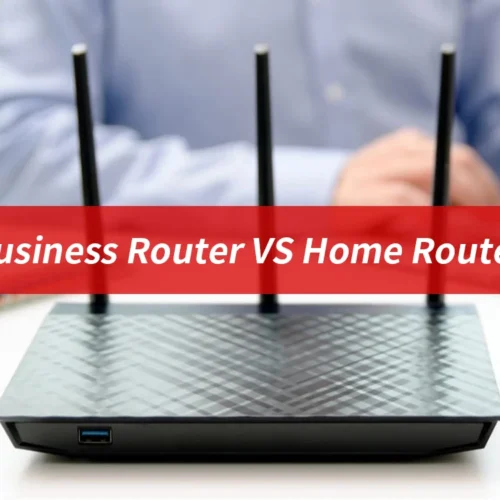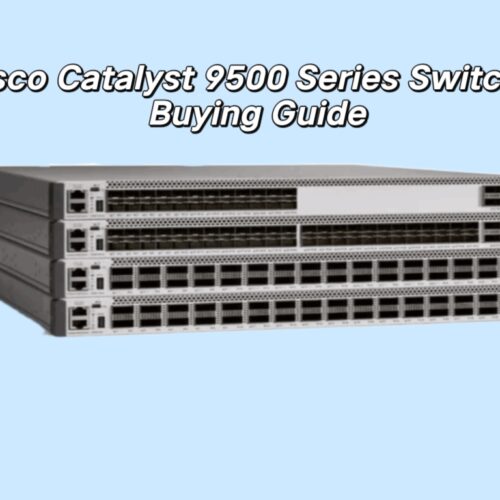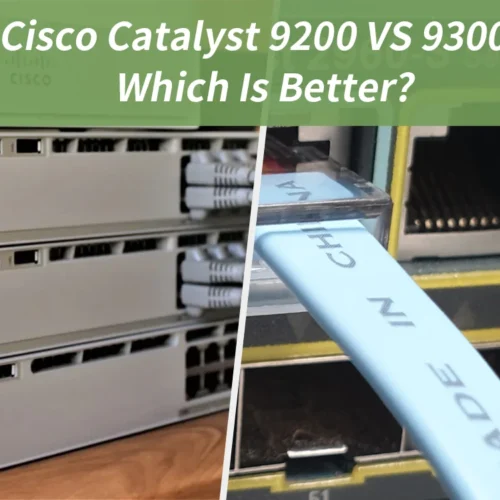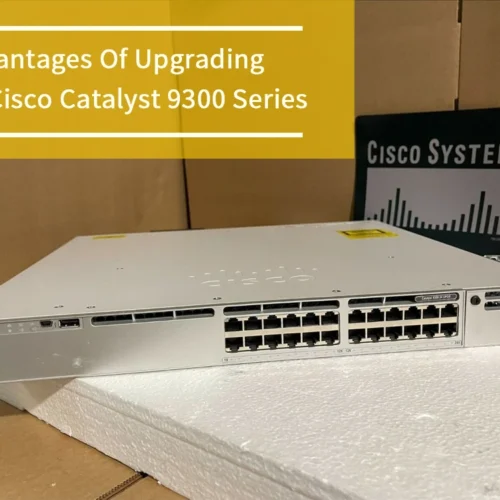Introduction:
Core switch VS aggregation switch is a long-lasting debate. You might have come across a situation where the two switches run parallel. However, it would make you more curious to know the differences between the two switches. In this blog, you will get to know their differences and an intro to the purpose of the switches.
What is a core switch?

A core switch is not like an ordinary switch but serves excellent responsibility. The network designers design the core switches in a way that serves two ideal purposes. For example,
- It routes the data
- It switches the data
It does perform the two jobs at the core network layer. Now after the core switches played their role in routing and switching the data, let’s move ahead. The switches carry this data to the following layers lying below this layer. As you know that for larger data, there is a need for multiple switching. Hence, the network gets numerous core switches. These switches prevent the accumulation of heavy traffic.
What is an Aggregation switch?
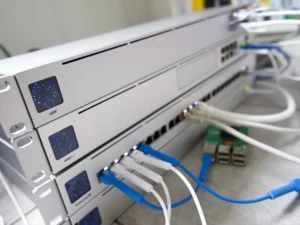
Let’s first go through the Aggregation switches to learn about the differences between a core switch VS aggregation switch.
The Aggregation switches are an essential part of networking. It helps various networks to join together. Then it allows them to form a single link. Similarly, it multiplies the bandwidth of the network. In the end, large bandwidth accelerates the network’s performance.
Usually, you would find them in a network that works on a larger scale. Hence it allows the perfect segregation and distribution of the data through different links.
You might have gained a good idea about the Aggregation switches from the above description. It is responsible for the followings:
- manages the data it receives
- filters the data
- data routing
Core switch VS aggregation switch – An introduction
Nowadays, every single person is aware of Ethernet. The reason behind this awareness is the versatile usage of this technology. You might have encountered a situation where you must connect to the Internet through Ethernet cables. Is it so? Your network is complex, so you must learn about it. Also, the network Ethernet is always very complicated and encounters frequent troubles. Thus, the network designers divide the network into different layers.
Well, the division of layers doesn’t stop here; instead, many components connect to the layers. For example, you might have encountered switches, transmitters, receivers, etc. Hence, they integrate all these components for better networking and maintenance.
An essential component is the switches. The term switch branches for different types of switches like:
- Core switches
- Aggregation switches
- Distribution switches
- Access switches
Core switch VS aggression switch is an argument that makes you think about the purpose of these switches. We will only discuss the core switch and aggregation switch here. Below you will discover the differences between both switches.
Core switch VS aggregation switch – the significant differences
Once you have gone through the network and its hierarchy, you should know the clear pictures of the switches. However, these switches would take you back to the hierarchical system of the network. However, both switches are distinctive and many other ways. Let’s go through the argument of the core switch and aggregation switch and the differences.
-
Purpose of usage
The core switches collect the data traffic from the other layers, like the distribution and access layers. Similarly, it manages the external network traffic too. The core type layer consists of numerous core switches working at high speed.
On the other hand, the network aggregation switches combine different networks with working on a link. Hence it amplifies the bandwidth of the network..
-
Performance
Well, another difference in the debate of core switch VS aggregation switch lies within the performance of the switches. The core switches operate faster than an aggregation switch. That’s because the core switch links with multiple aggregation switches. Hence it has to work efficiently to manage the data traffic. In comparison, an aggregation switch doesn’t need to be very fast.
-
Network requirement
Multiple access switches are present within the network but at different spots. Similarly, at every location, you will come across the aggregation switch. At that time, a core switch is essential for data optimization. So, the aggregation-type switches get connected to the core switch for high data performance.
-
Quantity of switches in a network
Core switch VS aggregation switch comes with other differences too. To answer this, let’s look into their quantity. In a typical small network, you will come across a single-core switch or two. However, the opposite number is for the aggregation switches. These switches are more significant, as you will find them in two network layers.
-
LAN network
The aggregation switch VS core switch would take you back to the LAN network. You would see aggregation switches situated in the LAN network. At the same time, you won’t always find any core switch in that network. A small-sized network doesn’t demand the core switches.
-
Usage
To ease the argument of aggregation switch VS core switch, read ahead. An aggregation switch is essential where the network requires multiple data layers. It is best to manage the data traffic from various directions. On the other hand, a core switch serves different purposes.
-
Data traffic handling ability
The aggregation switches are responsible for managing the data traffic from multiple directions. Hence along with managing the traffic, it offers rapid switching. This feature makes the switches great so far. At the same time, the core switch handles the traffic differently.
-
Capacity of switches
When the data traffic is at its maximum, typical switches like aggregation switches are not so capable. Network designers always look forward to something better than those switches. Hence the core switches are the best choice. These switches come with a high capacity to deal with the data.
The significance of a core switch VS aggregation switch
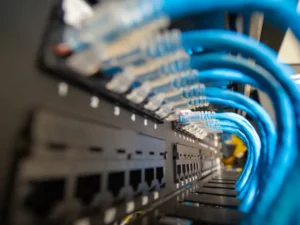
Both of the switches work side by side. To elaborate on this, let’s get into the network structure. What do you think? What is the requirement for placing core switches in a network? It usually serves two primary purposes.
-
Data optimization
In case a network already has access switches and aggregation ones, what does a core switch do? The job of this switch is to provide optimization of the data.
-
High performance with low complexity
Imagine you come across a network that includes numerous access switches. Also, these switches connect to one aggregation switch. It will indeed affect the quality of the network. So to ease this problem, you will require the core switches. A core switch is a proper replacement for the multiple aggregation switches. Thereby, a network core switch brings simplicity to the hierarchy of the network. Hence, it becomes easier for network specialists to manage the entire network easily.
Networking layers
Whenever you design a network, you must look forward to the layers. For you, layers seem very easy; however, they are complicated. If you are new to the system of layers, then let us first clarify for you. The primary purpose of layering is the flow and exchange of data in and out. Hence, the entire layering structure divides into four main layers.
- Core layer
- Distribution layer
- Aggregation layer
- Access layer
If the traffic flows within the server, it usually doesn’t pass the core network layer. However, if the data circulates between the network zones, it first goes to the core. How to manage this data would be your next query? The data could get more manageable by installing switches on the aggregation network layer. Let’s now go through these layers one by one.
Core layer
The core network layer is often considered the essential layer. It is because it develops a connection between the aggression modules. Similarly, it creates a connection with the leading network. Therefore, it requires rapid switching that deals with the changes in the network.
This layer includes a set of switches. It helps in routing the data achieved at the switches of the network. Then, it transmits the data to the next layer, called the distribution layer.
Distribution layer
At this layer, switches play an integral role. It helps in transmitting the data to any devices connected to the network. Similarly, it prevents the data from accumulating within the network. Now, it is responsible for distributing the data further to the required devices.
Aggregation network layer
You might be curious to know what it does, so read ahead. This layer aims to develop a connection by communicating the data to a satellite. So, it connects the data it extracts from the access layer and delivers it to the center of the network. It serves the best purpose for switching. Hence, security devices usually have this switch in them. Further, it collects the data traffic from the access layer. Then it sends this traffic to the core type layer.
Also, it is responsible for providing data with large bandwidth.
Access layer
This layer marks as the lowest layer in data networking. It delivers the data to the devices directly configured to the network. Hence, it is responsible for working at the receiver end, devices connected at the output.
Conclusion:
Core switch VS aggregation switch is a never-ending debate regarding their differences. Similarly, you would have understood the requirement of the switches in the network layers.


